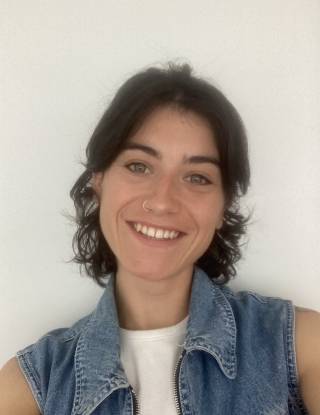PhD supervisor: Alison Wright (primary supervisor), Bob Mills (secondary supervisor)
Working title for PhD: Non-human life in early sixteenth-century Italian art
My research draws on an emerging theoretical framework in the humanities, that of ecocriticism, in order to better understand human attitudes towards non-human beings in early sixteenth-century Italy. This is the first project to take a sustained and in-depth ecocritical perspective in an historical study of the art of this period. Rather than looking at ‘real’ fauna and flora at this time, I propose that antique-sanctioned imaginaries of non-human life were not simply literary or mythological fantasies, but can be understood as meaningful vehicles of perceptions towards the difference - and potential porosity - between human and non-human beings at the time. I am particularly interested in small-scale bronze works made in the Veneto (from imagined semi-human figures like satyrs and sea-monsters, to life casts of toads and lizards); printworks depicting human-to-non-human metamorphosis (for example, Daphne transforming into a laurel tree), and ornamental grotesques. How were the emotional capacities of semi-human and non-human beings represented? How did such representations enter the consciousness of viewers (particularly through materiality and setting), and in what ways might this have spilled out into real-life conceptions of, and interactions with, non-human beings?
I am developing an ecocritical methodology that draws upon decolonial and feminist art histories, animal studies and material studies, as well as current campaigns for climate and social justice. I believe that an effective ecocritical art history must balance historical specificity with a clear recognition of the present climate and ecological breakdown; in the time I am set to complete my research, leading scientists warn that we are very likely to pass at least five catastrophic climate tipping points. What does an effective and rigorous ecocritical art history look like, both intellectually, personally and socially? How might it contribute to the climate justice movement, and to the building of a safer, fairer world?
My PhD is fully funded by the UCL Research Excellence Scholarship.
Conference papers and presentations
- Paper: ‘Still Alive: Nonhuman Animals in the Art of Giovanni da Udine’, Animal History Group Summer Conference, University of Lincoln, September 11-12, 2023
Outreach work
- I run an Instagram account (Eco Art Historian) dedicated to exploring the intersections between art history and climate justice.
Publications
‘From Pen to Paint: Parmigianino's Virgin and Child’, in The Art of Experiment: Parmigianino at The Courtauld (Paul Holberton Publishing, March 3, 2022)
Awards
- 2023 - UCL Research Excellence Scholarship
- 2020 - Winner of British Italian Society undergraduate prize
 Close
Close


